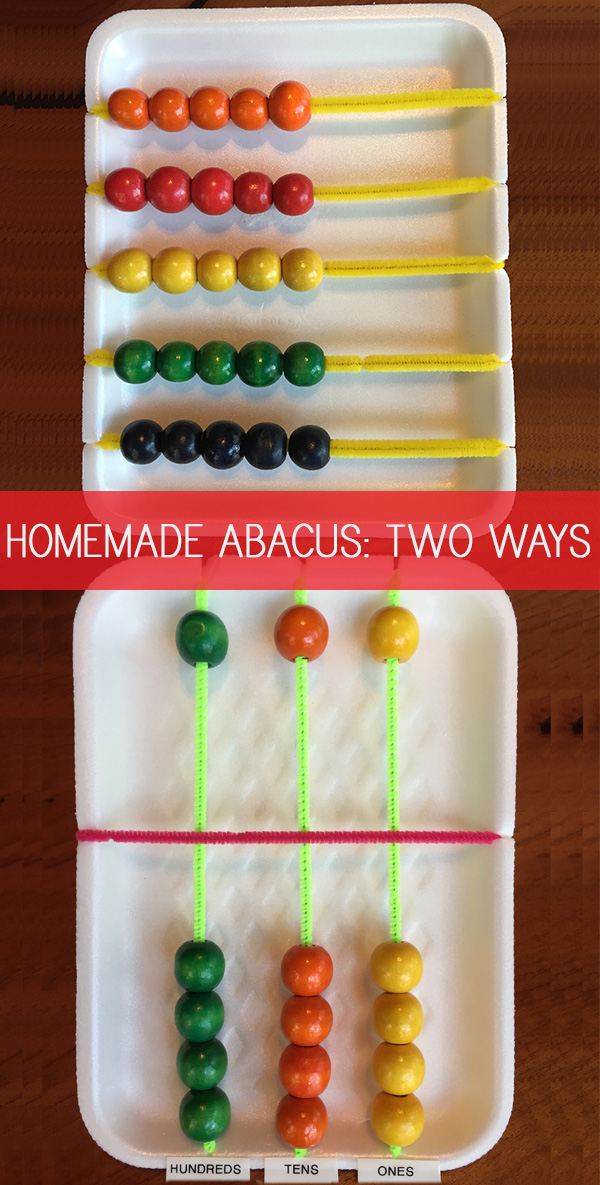Make a do-it-yourself abacus along with your little one or college students utilizing just some primary supplies – in reality, we’re sharing two totally different do-it-yourself abacus designs – a easy system that’s nice for younger learners and a barely extra difficult abacus primarily based on a Japanese soroban abacus that helps older college students who’re already accustomed to the idea of place worth.
Whichever you select to make, your youngsters can get pleasure from utilizing their abacus some hands-on apply with quantity ideas and computations!
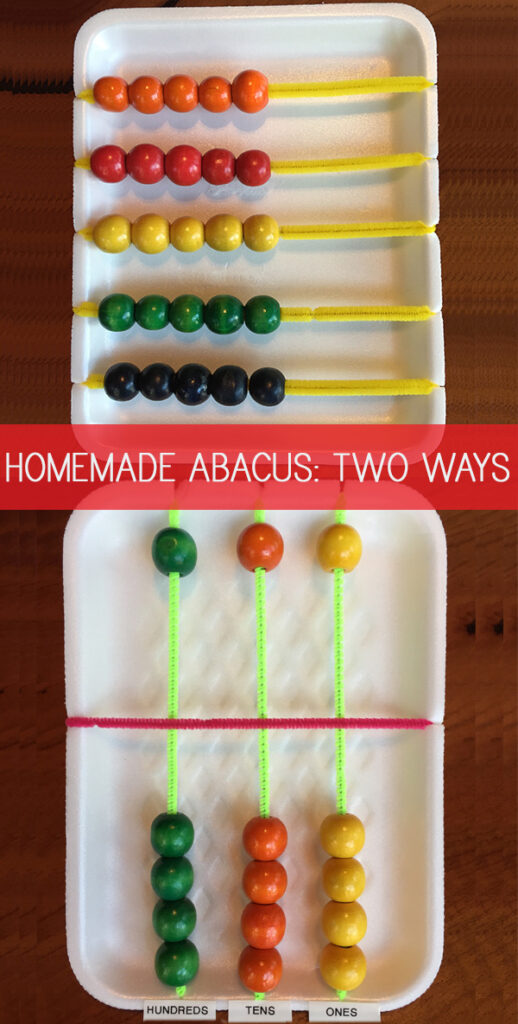
The right way to Make a Do-it-yourself Abacus
Why Make an Abacus?
Abacuses have been used for hundreds of years to carry out mathematical computation of all types- addition, subtraction, multiplication, and division- and they’re nonetheless extensively used in the present day! They’re particularly useful for youngsters who’re kinesthetic learners for the reason that abacus permits them to the touch and transfer the beads as they depend and work issues.
The right way to Make a Easy Abacus for Ages Four-Eight
You will have;
- A big, clear styrofoam tray (many grocery shops will fortunately donate unused trays- even class units for academics)
- 50 -100 colored beads (plastic or wood)
- 5-10 sturdy chenille/pipecleaner stems
- Robust tape
- Pencil
- Scissors
To make;
First, thread 5 or 10 colored beads on every chenille stem, 5 for preschoolers and 10 for youngsters in kindergarten and first grades. It’s finest to position beads of the identical color on every stem. Children will get pleasure from threading and counting the beads, however supervise youthful youngsters, particularly if you’re working with smaller beads.
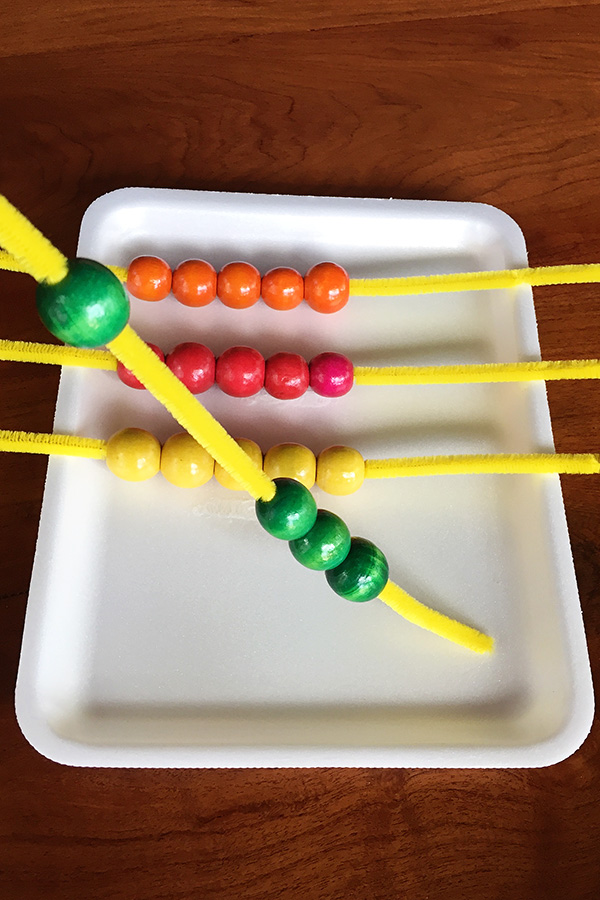
Subsequent, place the styrofoam tray vertically in entrance of you and lay the stems horizontally on prime with house between them (see photograph). Make a mark on the left and proper edges to indicate the place every stem is positioned.
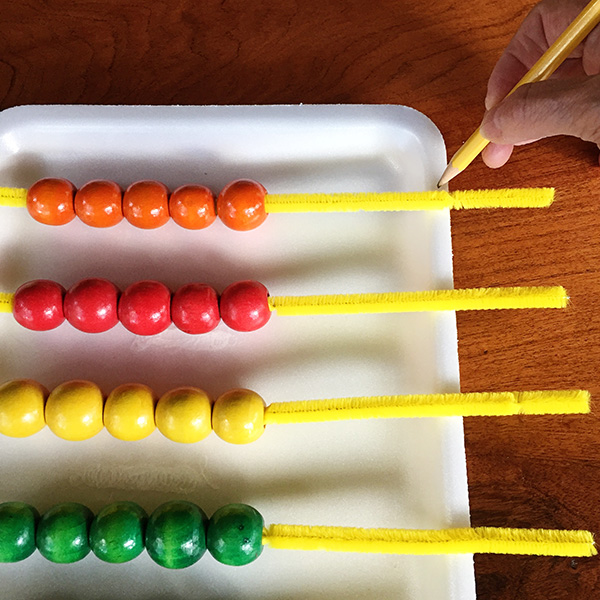
Use scissors to chop very small slits the place your pencil marks are. These slits will assist hold your chenille stems in place.
Gently wrap every stem on the tray into the slits on all sides of the tray. Pull arduous sufficient to straighten the stem, however not so arduous that the tray tears. As you wrap each, use tape to carry it in place on the again of the tray.
When you will have all the stems in place, add extra tape to bolster the again.
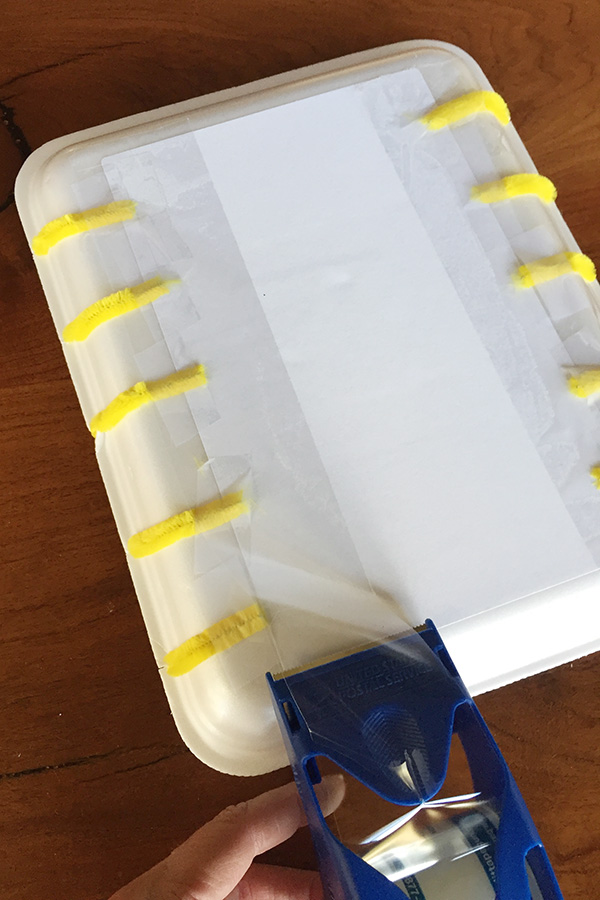
Now, you’re able to apply counting, including and subtracting!
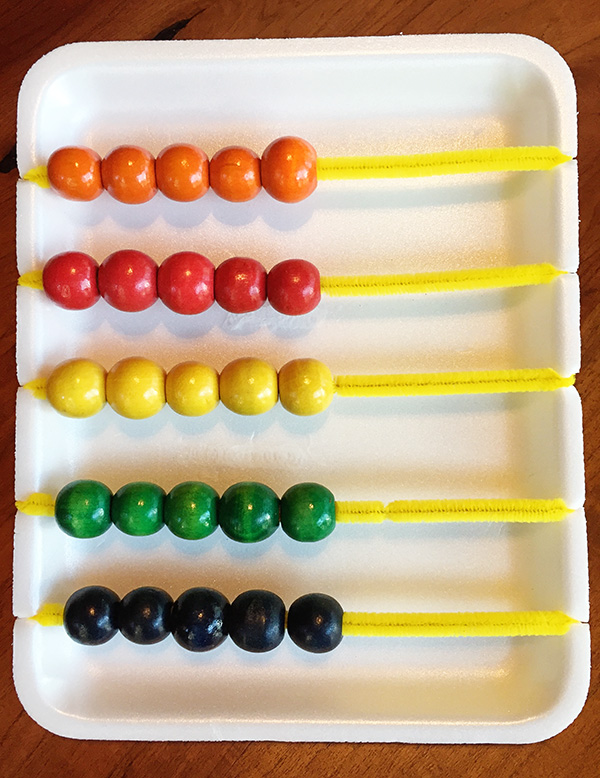
Do-it-yourself Abacus Exercise Concepts
- Relying on what number of beads you placed on every “rod,” your youngsters can depend by ones, twos, fives, tens, and so forth. They are going to start to note patterns on the abacus as they depend. Use your abacus to depend alongside by ones, fives and tens as you watch the video beneath.
- Discover what number of methods you may make 5 (slide 1 bead over, Four beads are to the left; slide 2 over and three are to the left, and so forth) or ten.
- Strive making bigger numbers and learn to add numbers collectively on an abacus, following this hyperlink to ABC Training.
For extra quantity details enjoyable, remember to additionally try our Quantity Details Grid Recreation and these Math Cube Video games.
The right way to Make a Soroban Abacus for Ages 9 and Up
You will have;
- A medium-sized styrofoam tray
- 15 – 20 colored beads
- three – Four chenille stems
- Robust tape
- Pencil
- Scissors
To make;
First, thread 5 colored beads onto every chenille stem. Every stem will symbolize a column of the place worth chart (ones, tens, a whole lot) so if you’d like your abacus to incorporate hundreds, you will have 4 stems. One bead will relaxation on the prime, the opposite 4 on the backside.
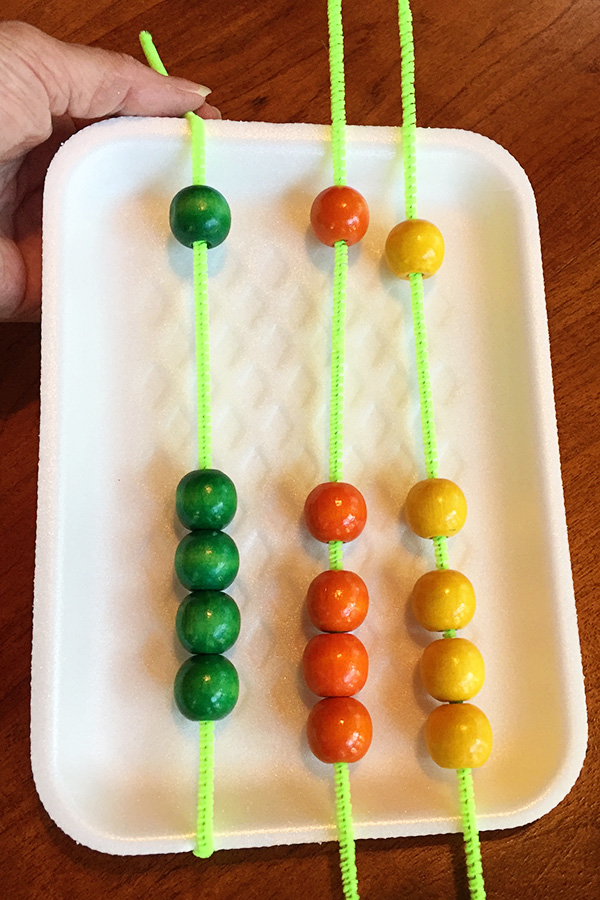
Subsequent, place the styrofoam tray vertically in entrance of you and lay the chenille stems horizontally on prime, with a bit house between them. Make a mark on the prime and backside edge to indicate the place every stem is positioned.
Use scissors to chop very small slits the place your pencil marks are. These slits will assist hold your stems, or “rods” in place.
Gently wrap every chenille stem on the tray the place the slits are. Pull arduous sufficient that every stem is generally straight, however not so arduous that the tray tears. As you wrap each, use tape to safe it on the again of the tray. When you will have all stems in place, you add extra tape or contact paper to bolster the again.
Lastly, place one chenille stem horizontally throughout the whole tray, midway down. Will probably be the centre line, referred to as the beam or reckoning bar. Slit the tray and wrap each side of the stem round to the again of the tray, as you probably did the others, utilizing tape to safe it.
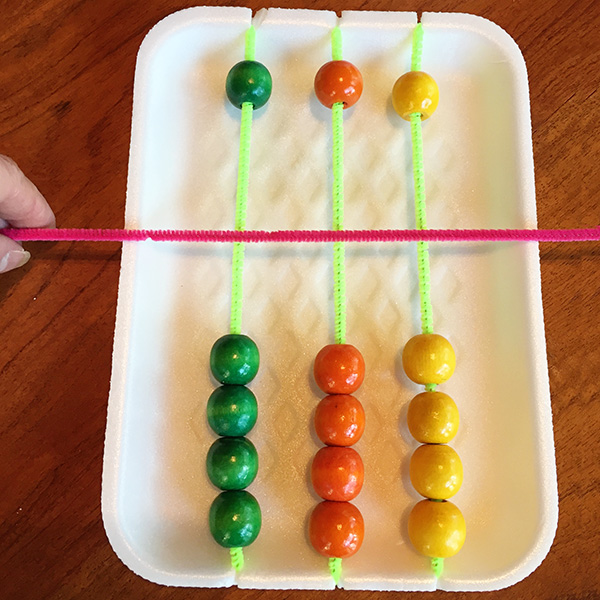
Do-it-yourself Abacus Actions
Now, let’s learn to use this kind of abacus! It’s primarily based on a Japanese type abacus referred to as the soroban. While you need to depend a bead, you progress it in order that it touches the centre beam. The underside beads, referred to as the “earthly beads,” all have a price of 1, and there are 4 in every column- the columns symbolize ones, tens, and a whole lot. The highest beads, referred to as the “heavenly beads,” all have a price of 5. So, for the highest orange bead within the tens column represents 5 tens, or 50.
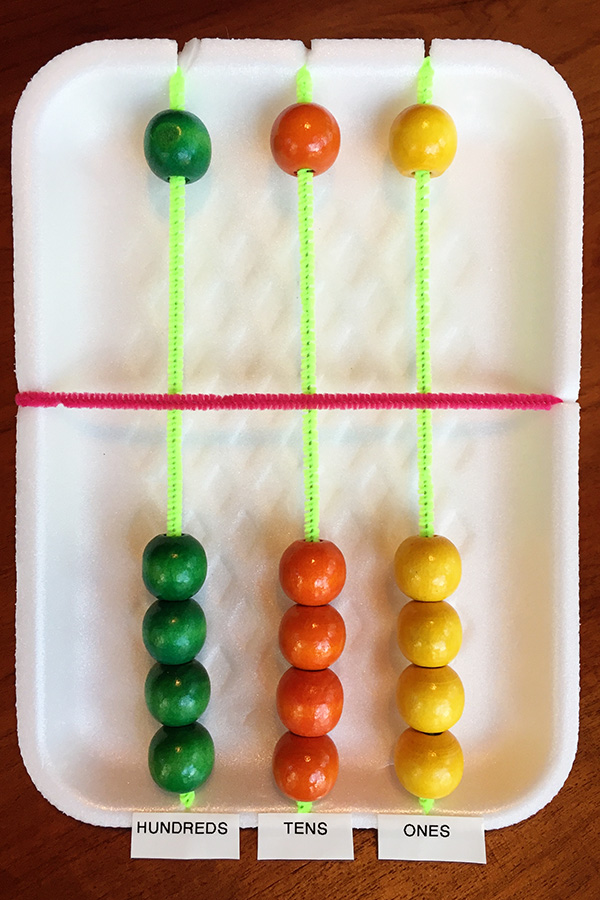
Try this video to see the way it works;
Then apply counting by ones, fives and tens with this video;
You may also prefer to obtain this free worksheet to apply making and determining numbers in your soroban abacus.
The very best form of studying is HANDS-ON, so have enjoyable!
The put up The right way to Make a Do-it-yourself Abacus appeared first on Childhood101.
